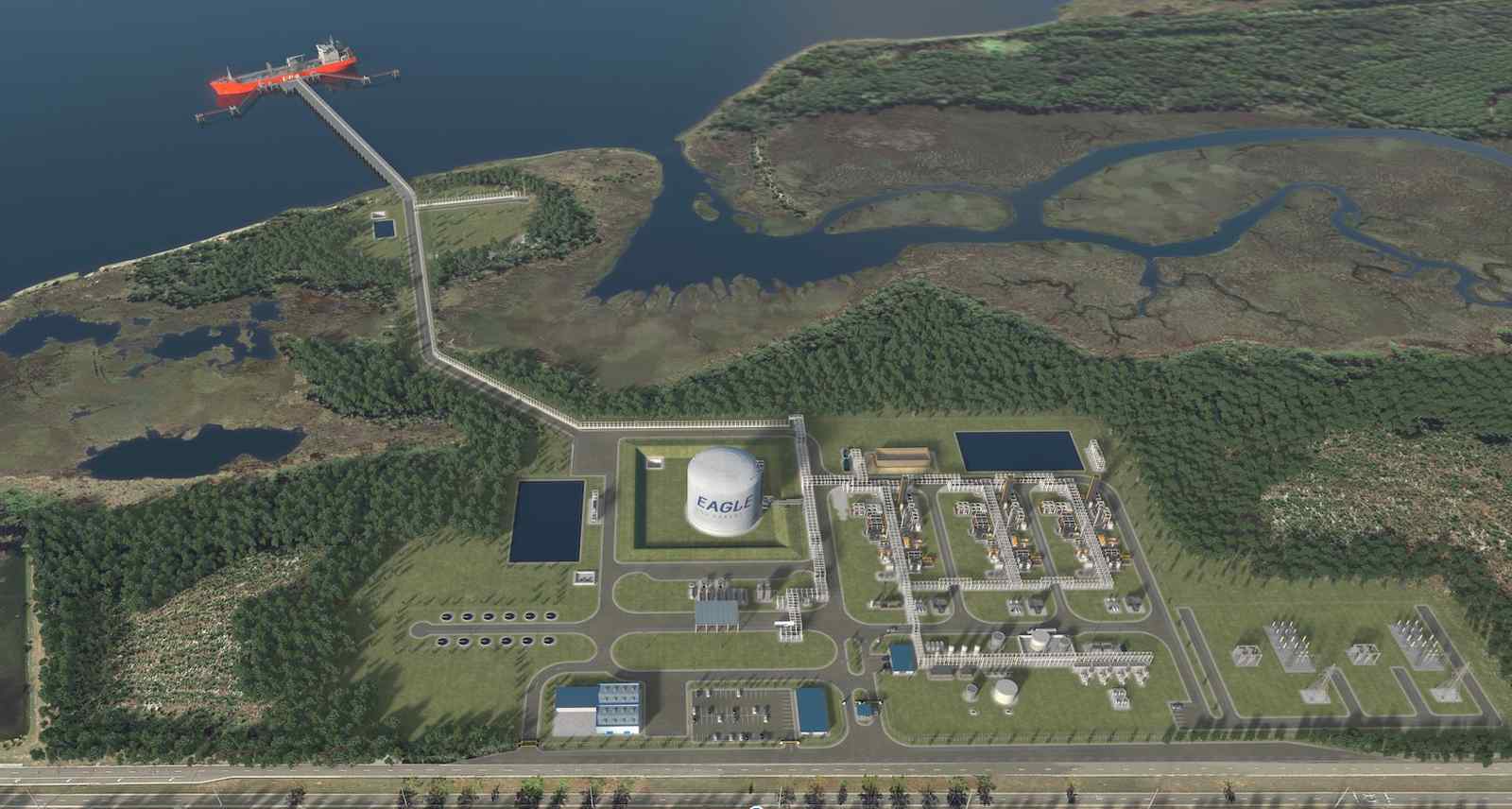S&P Global Platts: US regulators give Eagle LNG positive final environmental review
US regulators give Eagle LNG positive final environmental review, life Florida project hopes
HIGHLIGHTS
Jacksonville terminal would serve niche market in Caribbean, elsewhere
Small-scale liquefaction could face less opposition due to limited footprint
Houston — Eagle LNG Partners' small-scale project in Florida to liquefy natural gas for use as marine fuel and for export to the Caribbean and other markets took another step toward securing a permit Friday as US regulators gave a positive final environmental review to the proposal.
The about 1 million mt/year project is an offering at the other end of the spectrum from the mid-scale and large-scale LNG export terminals operating either on the US Gulf Coast and East Coast or are part of the second wave of facilities that are planned to start up in the early to mid-2020s.
As LNG financing continues to evolve, a more bifurcated market appears to be developing. Some export developers, like Tellurian, will be higher capitalized, beckoning the sale of equity partnerships and stock investments to support multi-train liquefaction facilities, such as Driftwood LNG. On the flip side, the growth of point-to-point LNG supply projects, such as Eagle LNG, is likely to support a burgeoning secondary market for small-volume long-term contracts well into the next decade.
In its final Environmental Impact Statement, the Federal Energy Regulatory Commission concluded that while the Eagle LNG project in Jacksonville would result in some limited adverse environmental impacts, those impacts would not be significant with implementation of mitigation measures the developer proposed and the agency recommended.
Among the "principal reasons" for that conclusion were that the LNG terminal site would be in an area currently zoned for industrial use along an existing, maintained ship channel in the St. Johns River, and Eagle LNG has a plan to minimize impacts on natural and cultural resources during construction and operation of the project, FERC said.
The developer, in a statement, said "achieving this critical milestone" bolsters its hopes to advance toward construction.
The smallest of the about dozen or so LNG export projects with pending applications before FERC would cater to a niche market that should allow it to differentiate itself from its competitors.
In terms of total trade volume, the continued growth in spot trade seems inevitable, but the aggregated volume of the small-producer, small-buyer contract market shouldn't be underestimated.
PROJECT SCOPE
Last year, the US House of Representatives passed a bill to expedite permit reviews for small-scale LNG export projects. The bill codified an existing Department of Energy practice that mostly eliminates the need for review of low-volume LNG exports, even those to nations that do not have a free trade agreement with the US.
The Trump administration has aggressively pushed for expansion of US LNG export volumes. While environmental groups have raised concerns about the impact such expansion will have on lands, waterways and important species. Smaller projects, by their design and purpose, have somewhat of an advantage in working through such opposition.
Eagle LNG (CP17-41) plans to build a three-train liquefaction facility that would temporarily store the produced LNG and eventually load it onto trucks, containers or ocean-going vessels for use in the marine bunkering trade and for export. The company, a joint venture of Ferus Natural Gas Fuels and GE Ventures, intends to serve both domestic and international markets.
-- Harry Weber and J. Robinson, [email protected]
-- Edited by Valarie Jackson, [email protected]


